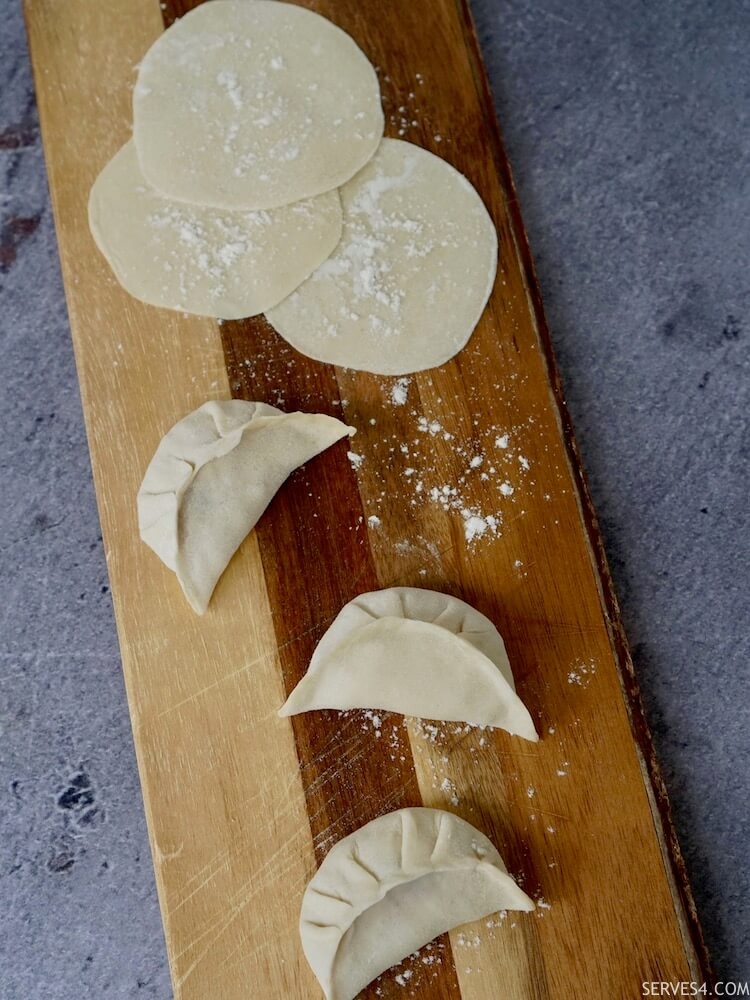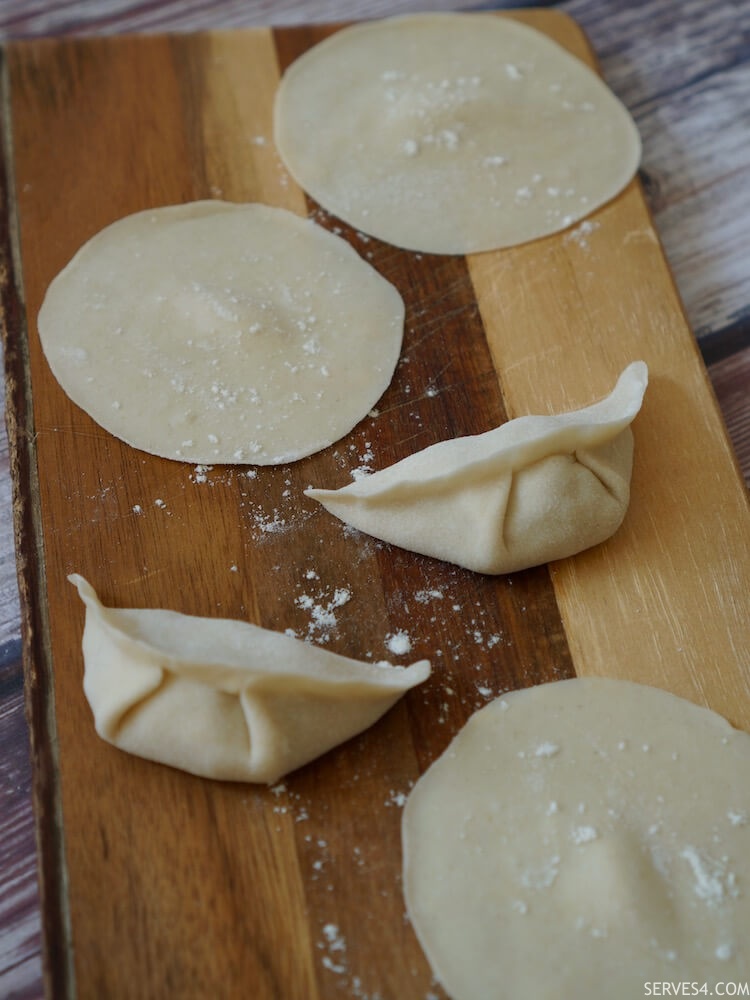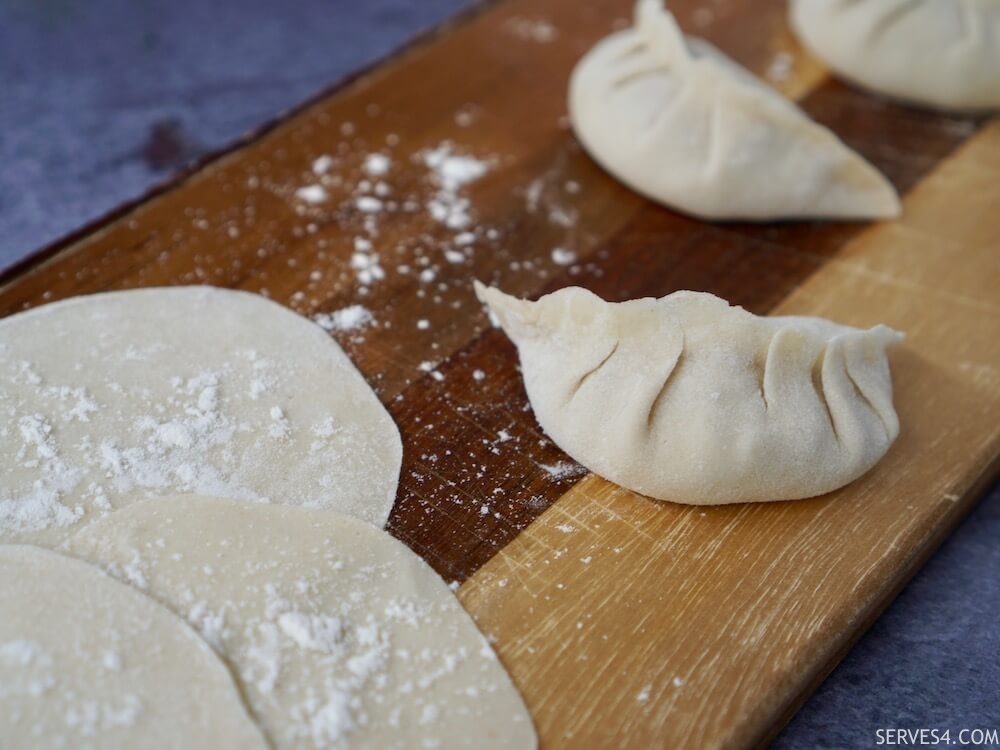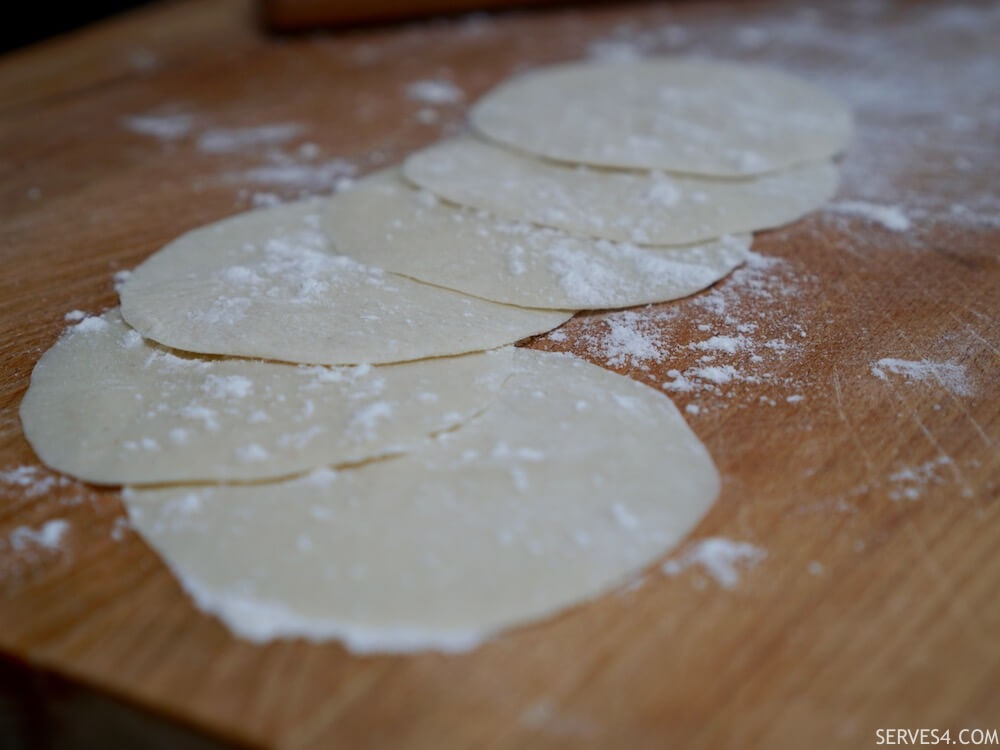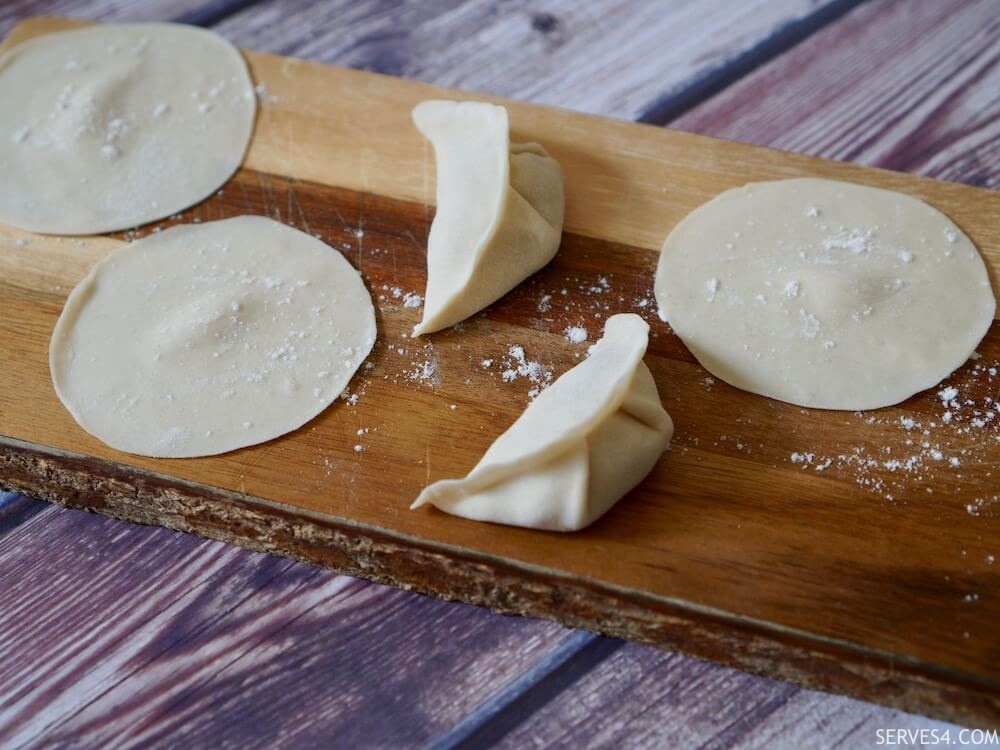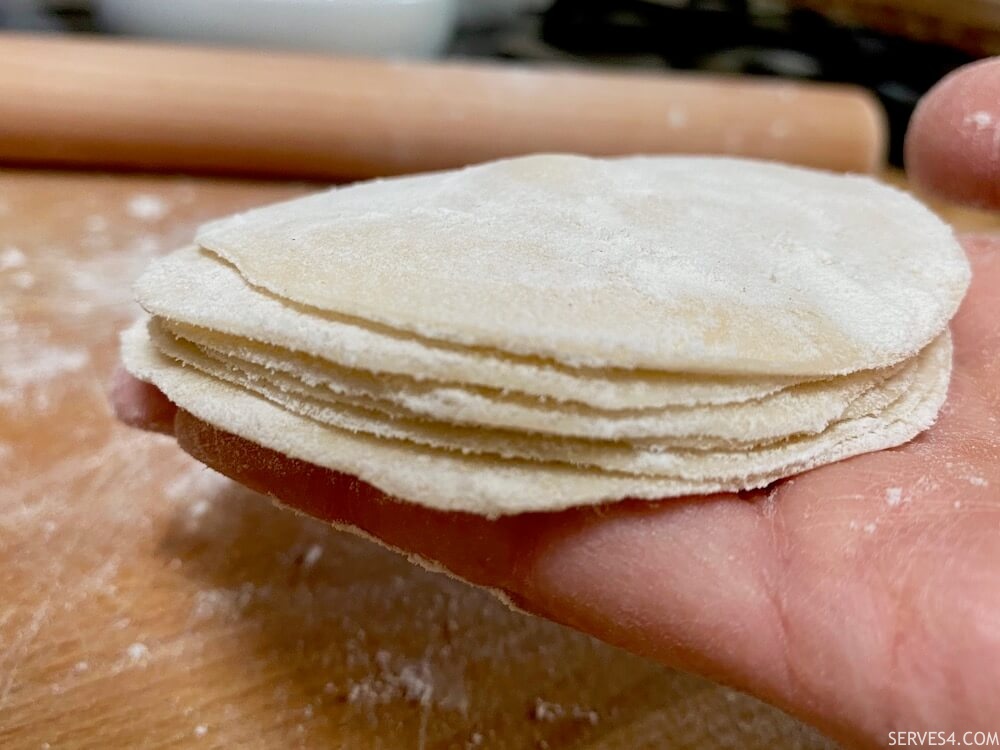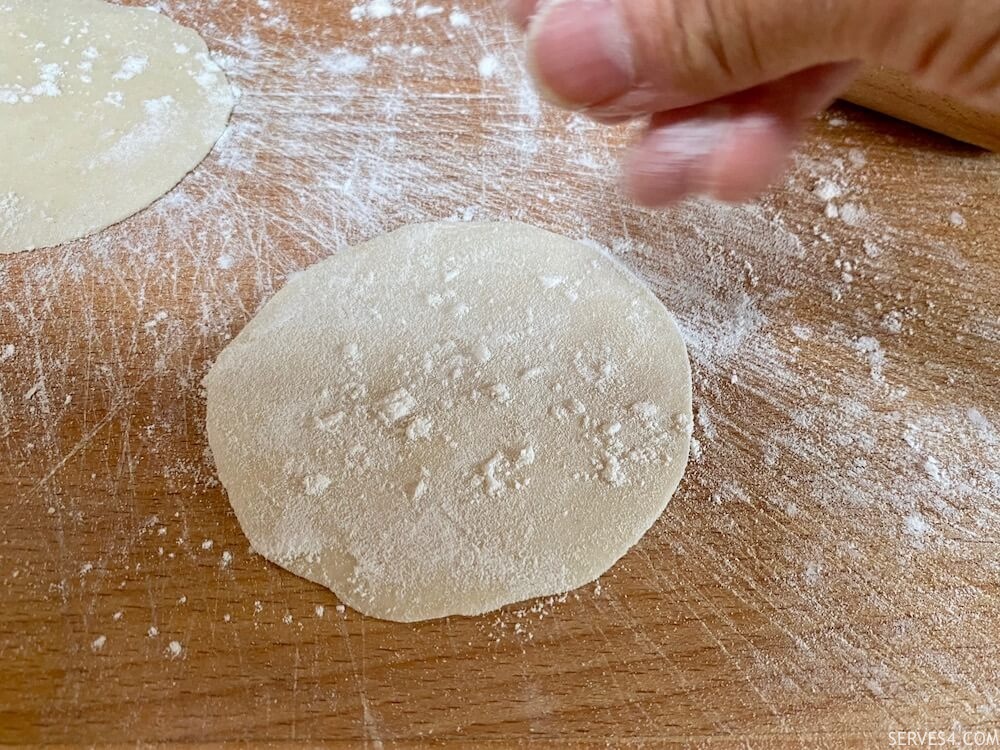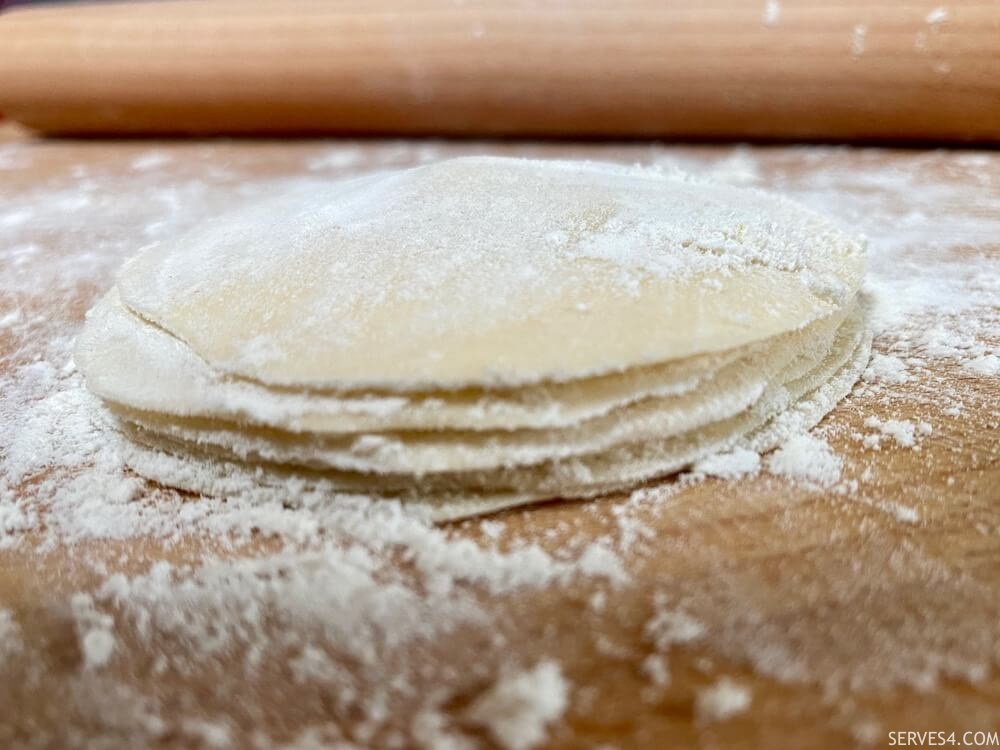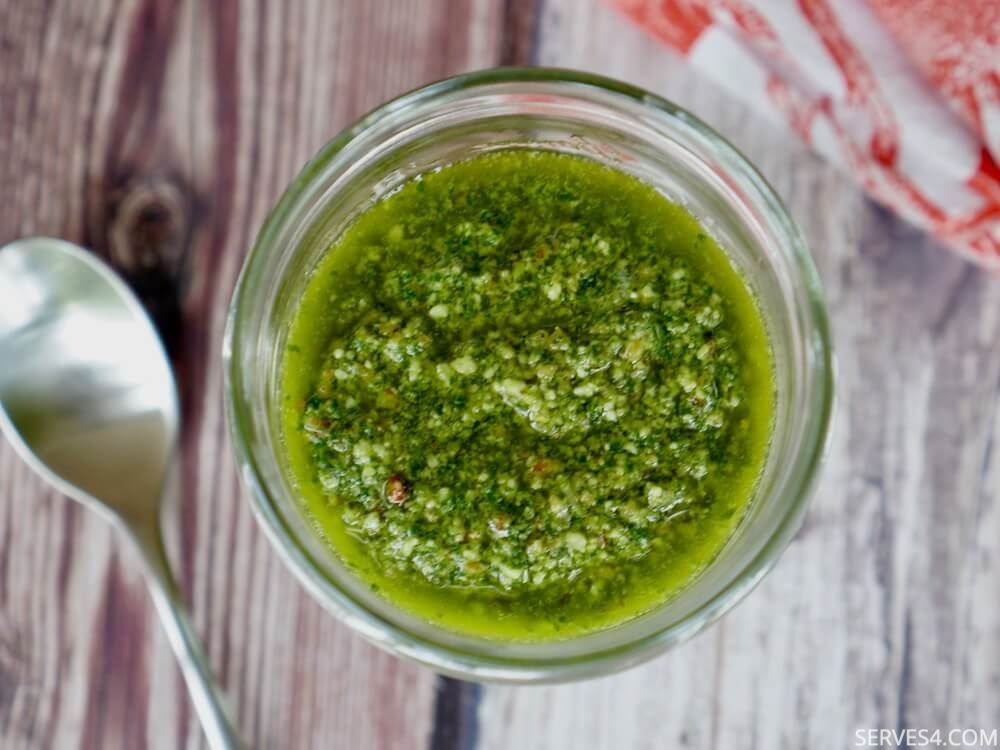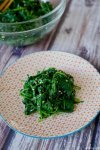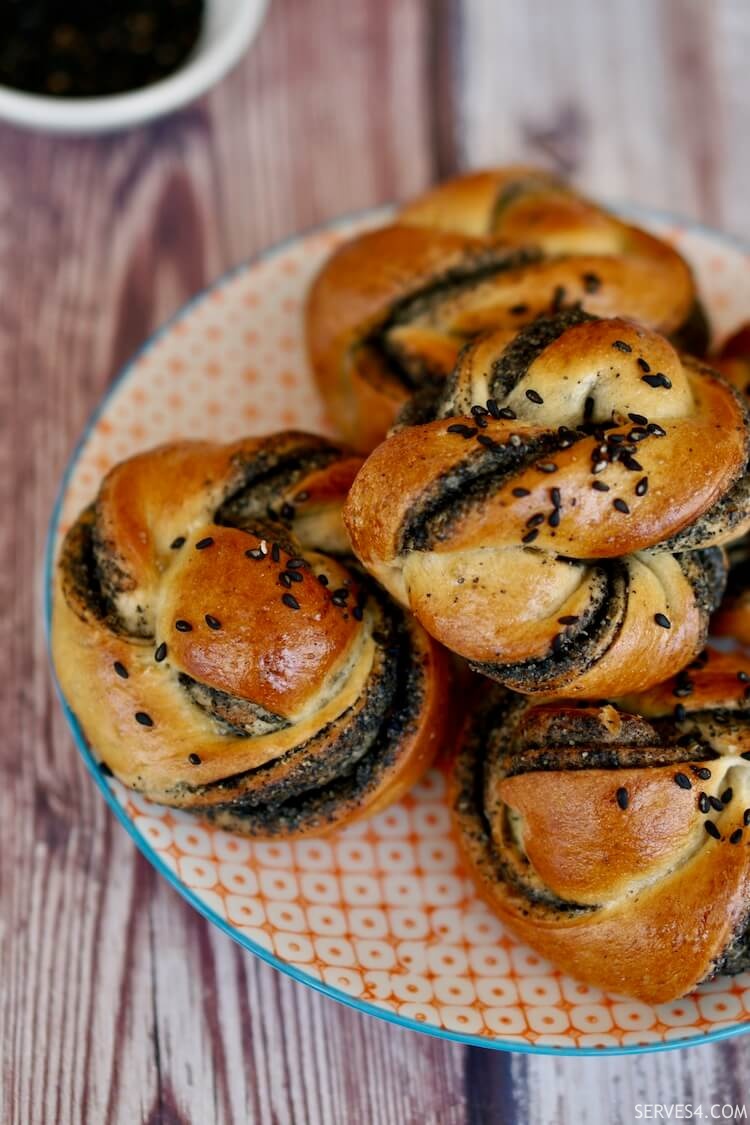- Serves 4
- Rice and Noodle Recipes
- Dumpling Wrappers (Jiao Zi Pi | 饺子皮)
Dumpling Wrappers Recipe
(Jiao Zi Pi | 饺子皮)
This page may contain affiliate links, which means we receive a small commission for purchases made using the links. There is no additional cost to you. Please read our full disclosure policy.
Here's a dumpling wrappers recipe, also known as dumpling skins (jiǎozi pí | 饺子皮), that couldn't be easier to make and requires only two ingredients! If you've ever wanted to make your own dumpling wrappers but have felt daunted by the idea, fear no more - this is a recipe that anyone can master.
But why would you need a dumpling wrappers recipe when ready made frozen ones are available? The primary reason, for me, is taste and texture. Homemade dumpling wrappers are fresher and have a soft and chewy texture, making them (in my opinion!) more pleasant to eat. They are also thicker, and therefore, hold together when cooked (who else hates it when dumpling wrappers break during cooking?! 🙋🏻♀️).
Homemade dumpling wrappers are also easier to use when folding dumplings. Anyone who has used ready made wrappers before will know that you need to use water to seal the dumplings, and even then, they don't always seal perfectly. With this homemade dumpling wrappers recipe, you get nice and soft wrappers that are easy to use and seal completely with a few gentle pinches.
You may have noticed that there are seemingly countless varieties of dumplings out there, and that's just in Chinese cuisine alone. It's worth noting that this dumpling wrappers recipe is ideal for using to make boiled Chinese dumplings (shuǐjiǎo | 水饺) or potstickers (guōtiē | 锅贴), as the thicker texture of the wrappers suits these types of dumplings.
The basic shape of a dumpling wrapper is a flat circle. How you achieve that flat circle doesn't matter too much, although in this dumpling wrappers recipe, I use the traditional rolling method, which requires cutting the dough into small chunks, and rolling each chunk individually into a circle. This may seem like a lot of unnecessary work, but it is a reassuringly mindful process that is really quite easy, once you get the hang of it.
A Note About Rolling Dumpling Wrappers
In the traditional rolling method, you take a disc-shaped flattened chunk of dough in one hand, and use the rolling pin with the other. Start by gently rolling from one place on the disc border to the centre and back to the border again. Then rotate the disc slightly until you're rolling along a new bit of border, roll to the centre and back again. Keep repeating these actions, always rotating in the same direction, until you've gone full circle. If the wrapper could be bigger, continue rotating and rolling until it reaches about 8cm to 10cm (3in to 4in) in diameter.
Don't be frustrated if you are not achieving perfectly round circles the first few times you do this - it does take some practice, and once you find your rhythm, you'll see that it's actually not very difficult to do. The best way to pass the time is to gather some friends round for a dumpling making party, where you can have an assistant to chat with and help you fill and make dumplings whilst you roll the wrappers.
The benefit of the traditional method is that the centres of the wrappers are naturally thicker than the edges, providing a good base to support the filling. But feel free to use whatever method you like to roll the disc into a flattened circle. The amazing thing about homemade dumpling wrappers is that they are incredibly forgiving!
If you prefer, rather than cutting the dough into smaller chunks, you could roll it into a very thin sheet (on a well-floured surface), or use a pasta maker, if you have one, and stamp out your wrappers using round biscuit cutters.
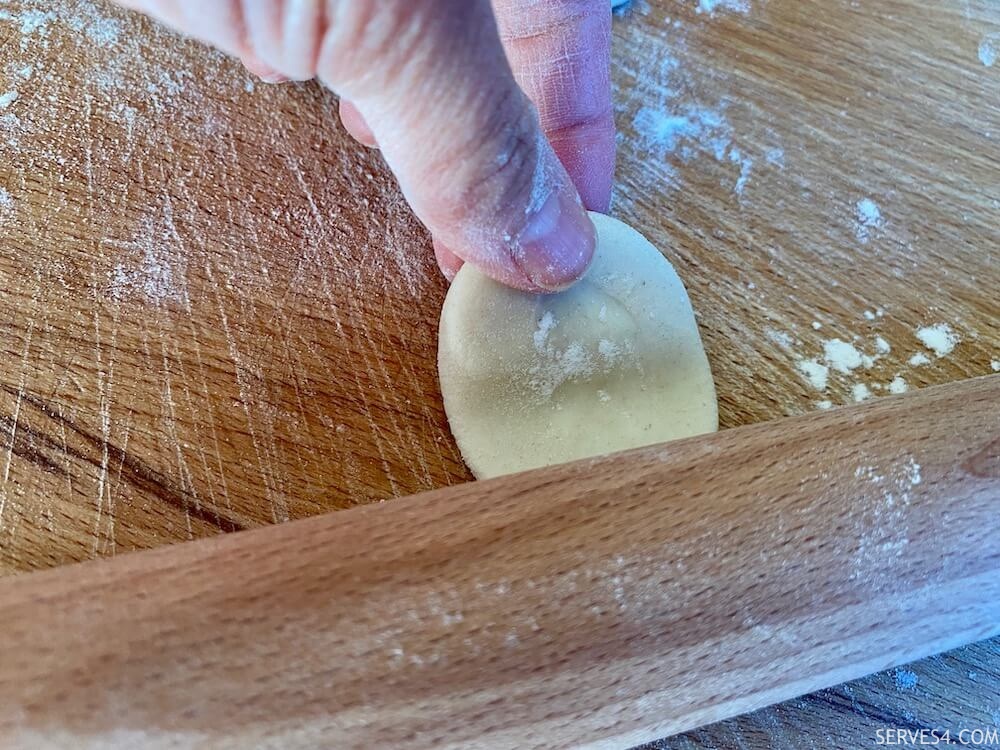
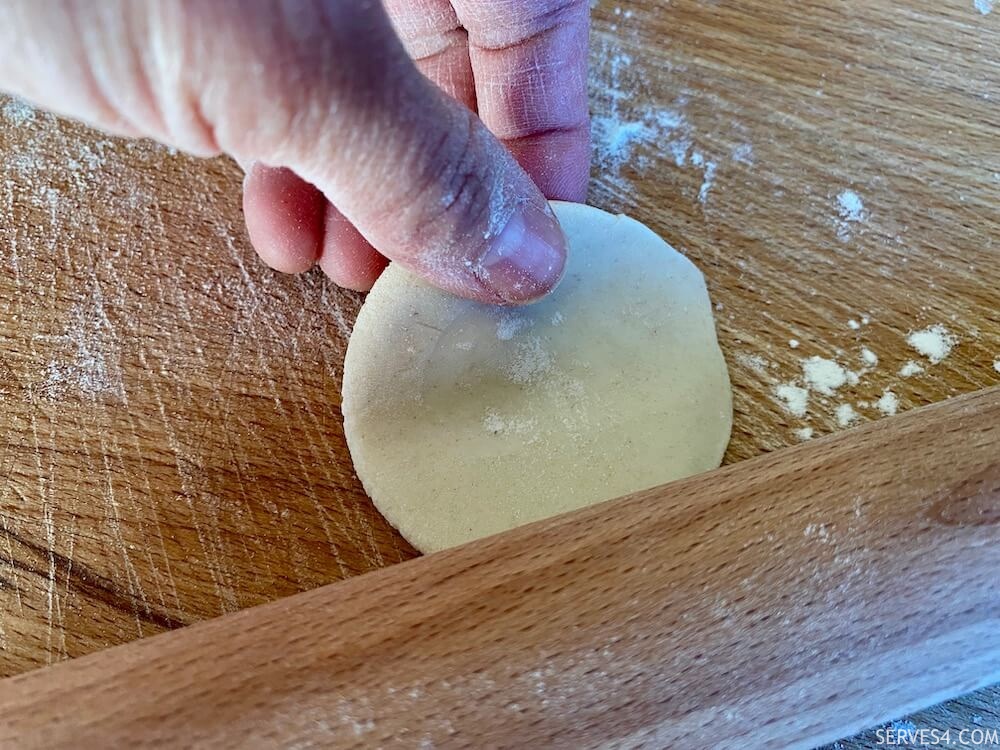
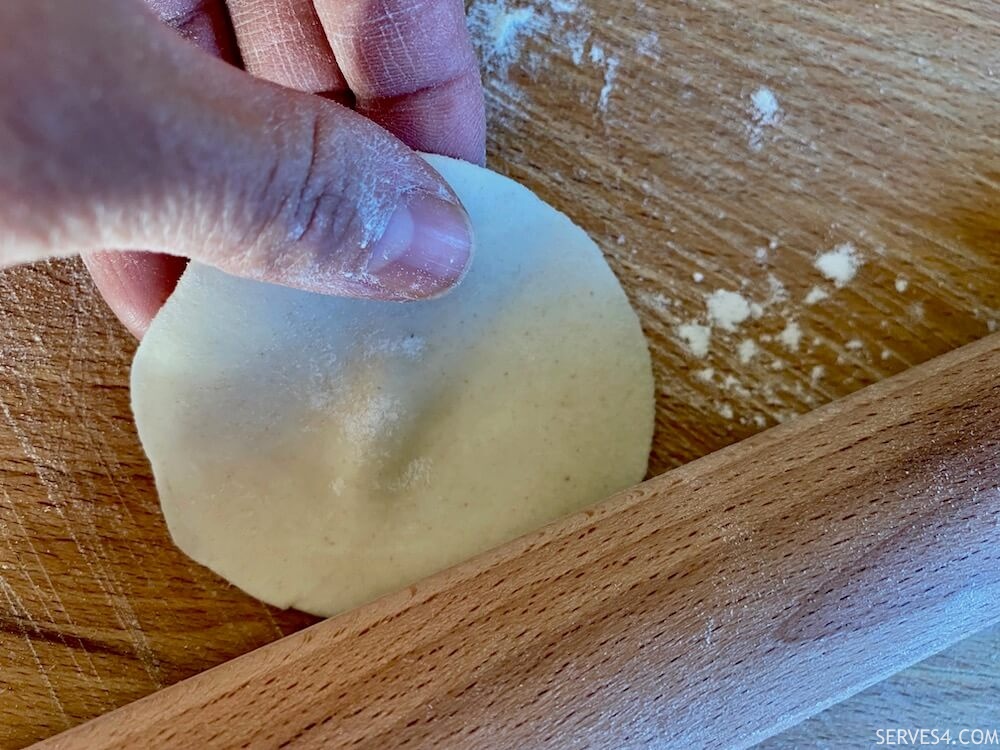
A Word About Plain Flour
The best flour to use for this dumpling wrappers recipe is plain flour, as it is called here in the UK. Even within plain flour, there is quite a lot of variance when it comes to gluten/protein levels. The ideal level of gluten in the flour is about 10-11% (check the nutritional label, the protein level should be 10-11g per 100g of flour). Gluten levels much higher than 11% mean the flour is very strong, and the dumpling wrappers will be quite resilient and elastic. Conversely, weak flour with very low gluten levels will mean very soft dumpling wrappers, which could be difficult to handle.
In this dumpling wrappers recipe, where I use plain four with 11% gluten, half the amount of water (in weight) relative to flour used is the ideal proportion. If you are using flour with more or less gluten, you may need to adjust the amount of water used; flour with higher gluten levels will absorb more water, and flour with less gluten will not absorb as much. It may take some trial and error to find the correct proportions based on your flour.
Tips for Successful Dumpling Wrappers
- Check the level of gluten in your flour -- it's helpful to know what you're using, so you can adjust the amount of water accordingly.
- If you're new to making dumpling wrappers, it's useful to knead the dough by hand to get a 'feel' for the texture and work out whether the amount of water used is correct.
- Flour is your friend -- don't skimp on flour when dusting! If in doubt, use more flour than less, as nothing would be worse than your wrappers sticking together, or to your work surface, and tearing.
- Make your wrappers in small batches and use or store straight away -- this is especially important if you're working on your own. Wrappers left stacked for too long will absorb the flour between them and start sticking together.
Storing Dumpling Wrappers
If you won't be using your dumpling wrappers straight away, it is very easy to store them for later use. Simply dust each wrapper generously with flour before stacking them directly on top of each other. Wrap them in cling film, and seal them in an airtight freezer bag.
I recommend freezing in small batches, as once thawed, you'll need to use them straight away or they will start sticking together. Separate the wrappers as soon as they're thawed to prevent sticking. Use frozen dumpling wrappers within one month or they start to dry out and crack.
Other related recipes to try:
- How to Make Chinese Dumplings (Shui Jiao | 水饺)
- Dumpling Filling Recipe
- Pork Dumpling Filling with Garlic Chives
- Spicy Chinese Dipping Sauce
You may also like these other recipes to enjoy at Chinese New Year:
- Baked Sticky Rice Cake with Red Bean Paste (红豆 烤年糕)
- Sweet Red Bean Paste (红豆沙) (you can also make Instant Pot Red Bean Paste)
- Chinese Rice Cake Stir Fry (炒年糕)
- Lion's Head Meatballs (狮子头)
- Glutinous Rice Balls (汤圆) with Black Sesame
Here's what you'll need to make this dumping wrappers recipe:
(Click here to jump straight to the recipe)
250g plain flour, plus a generous amount for dusting
pinch of salt (optional)
125ml water
And here's what you'll need to do:
- You can make dumpling wrappers either by hand or using an electric mixer with dough hook attachment.
- Put the flour (and salt, if using) into a large mixing bowl, and make a well in the centre.
- Add the water, and stir in one direction to roughly combine.
- Then, using either your hands or dough hooks (on low speed), knead gently for about 8-10 minutes until the mixture comes together and a dough forms.
- Shape it into a rough ball, cover and leave for 15 minutes to rest.
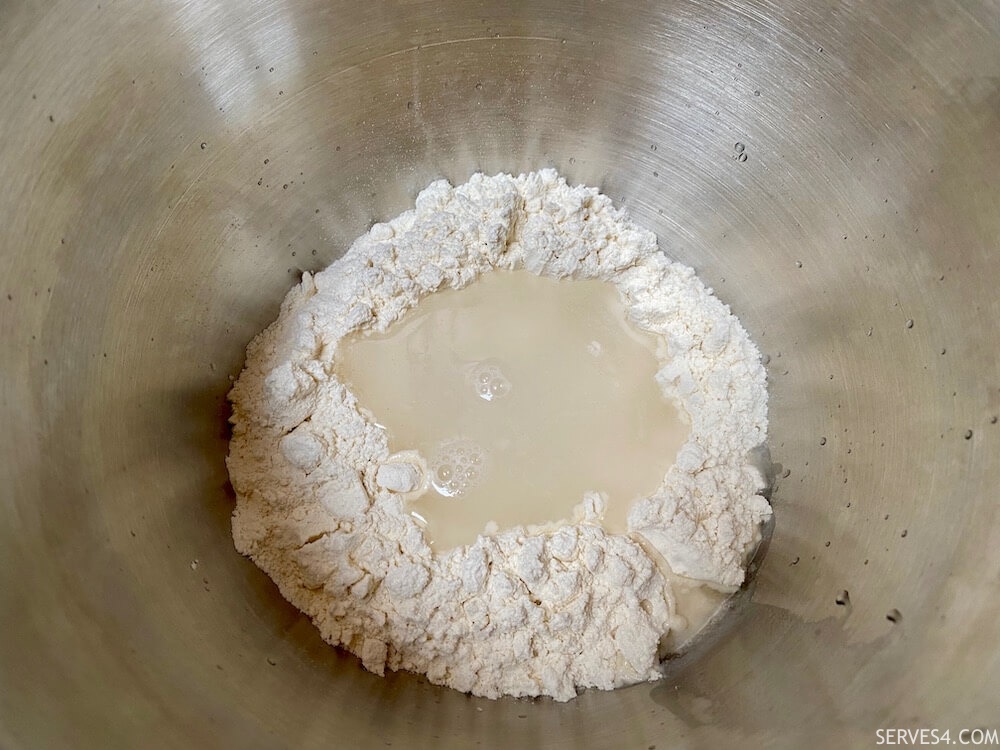
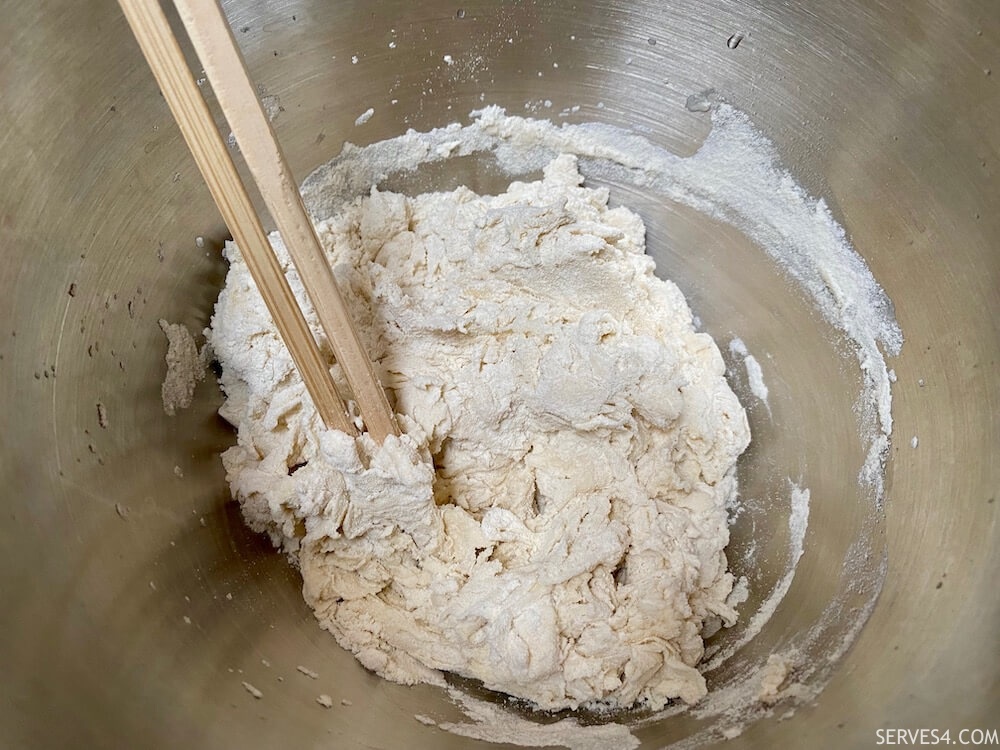
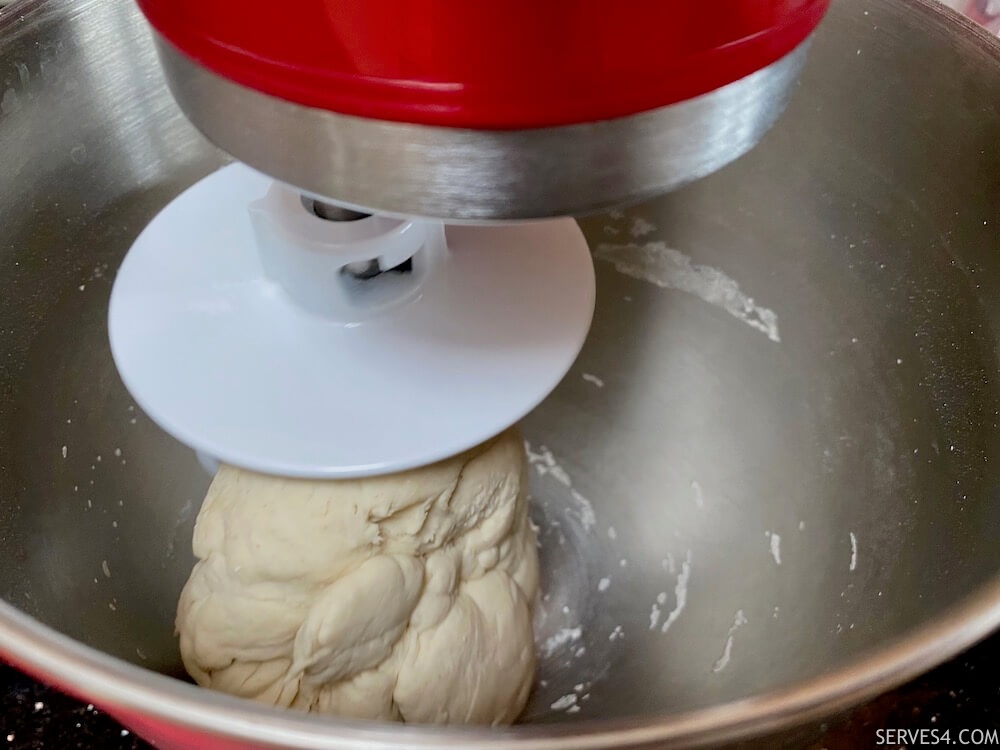
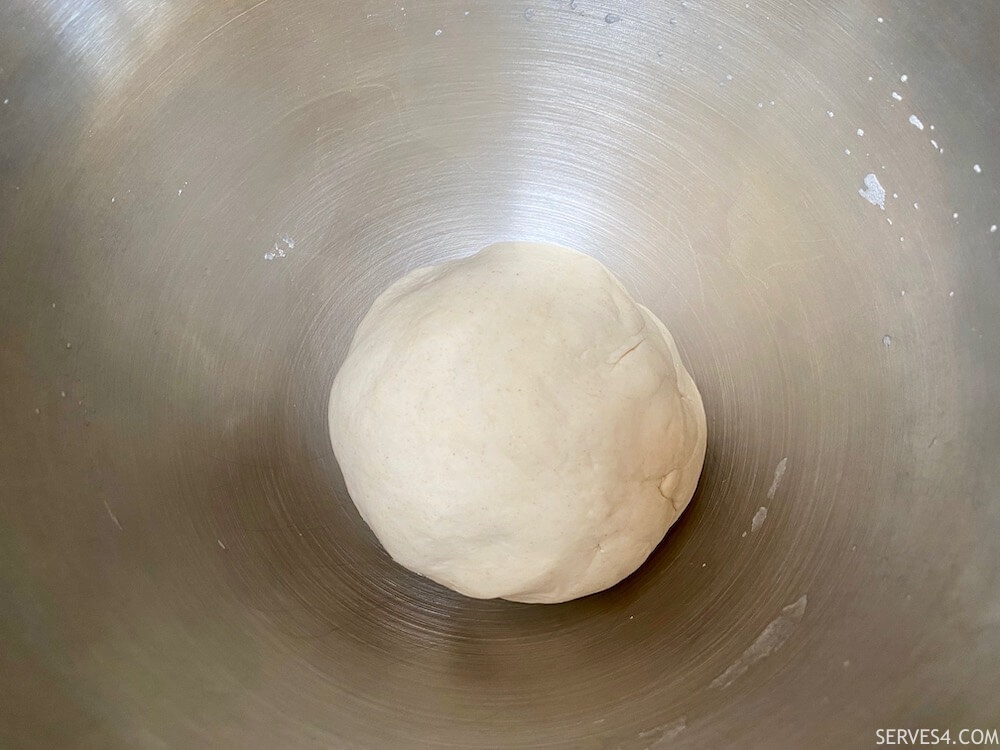
- Knead again for about 2-3 minutes until you have a really smooth dough. Again, shape it into a ball, cover and leave to rest for an hour (the longer you leave it, the softer the dough will become).
- You should now have a very smooth dough that is soft, pliable and easy to work with.
- Dust a work surface with flour, take the ball of dough into your hands, and using your thumb, pierce a hole through the centre.
- Pass the dough gently between your hands in one direction to stretch it, letting the bottom fall onto the work surface as the hole becomes larger, until you have a large ring; the dough should be approximately 2cm (3/4 in) in diameter.
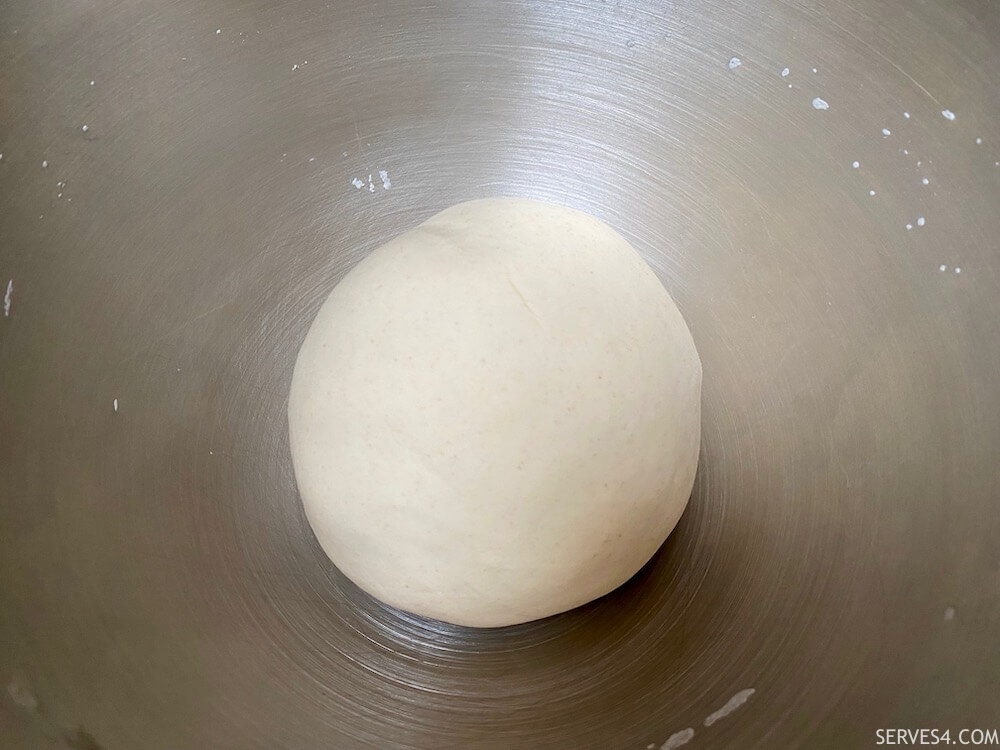
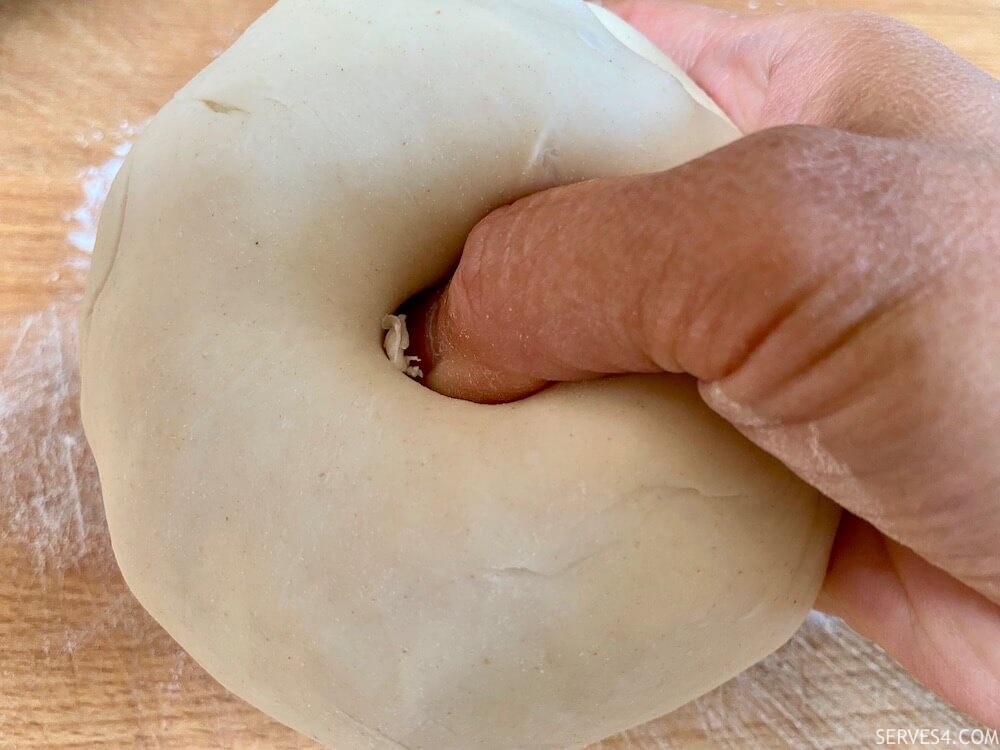
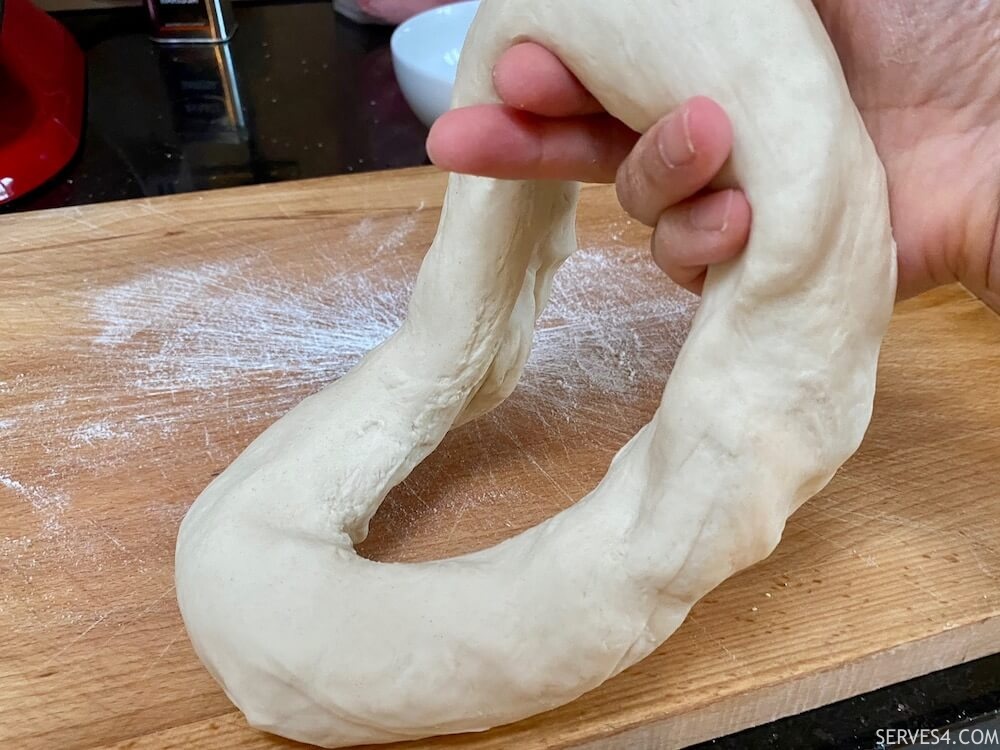
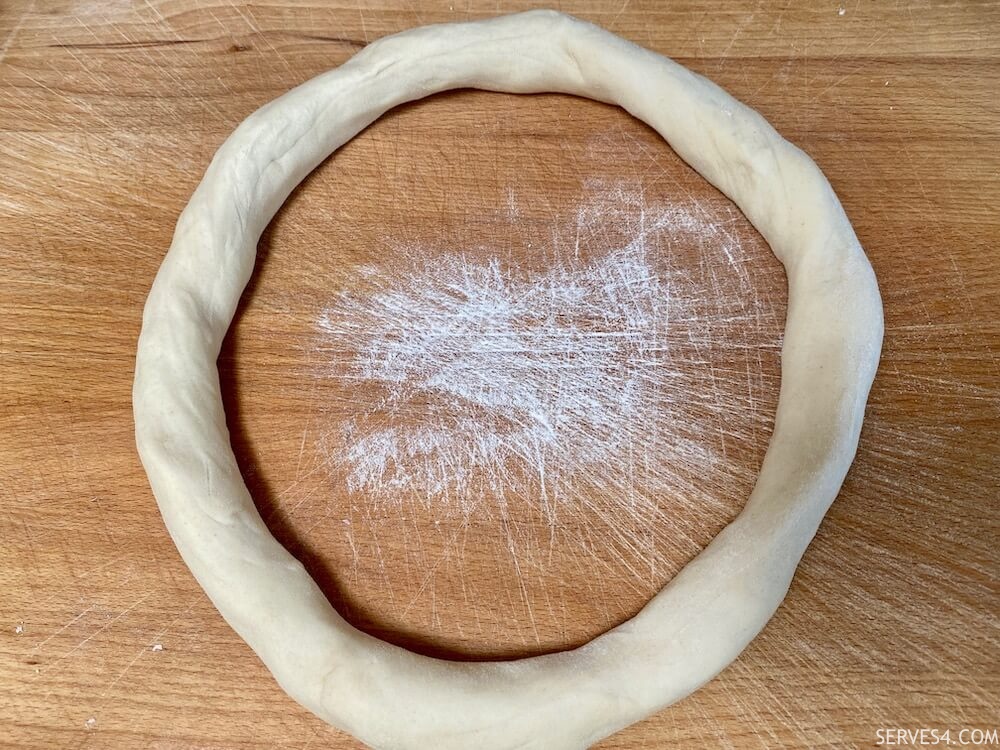
- Cut the ring into 6 equal segments, covering the other 5 with an inverted bowl to prevent drying, whilst you work with one segment at a time.
- You can now choose how you want to roll your dough and make your wrappers. If using the traditional method, continue with the steps below.
- Dust your work surface again, cut the segment into six equal chunks.
- Turn them onto their sides, sprinkle each with and flour, and use the heel of your hand to squash each one gently into a disc.
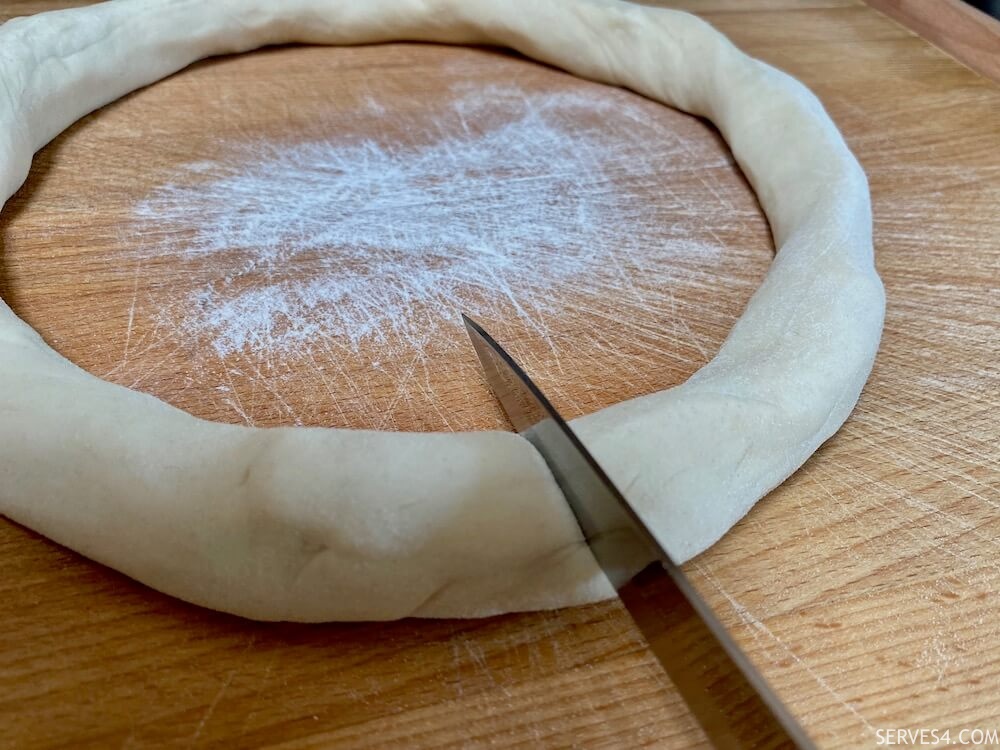
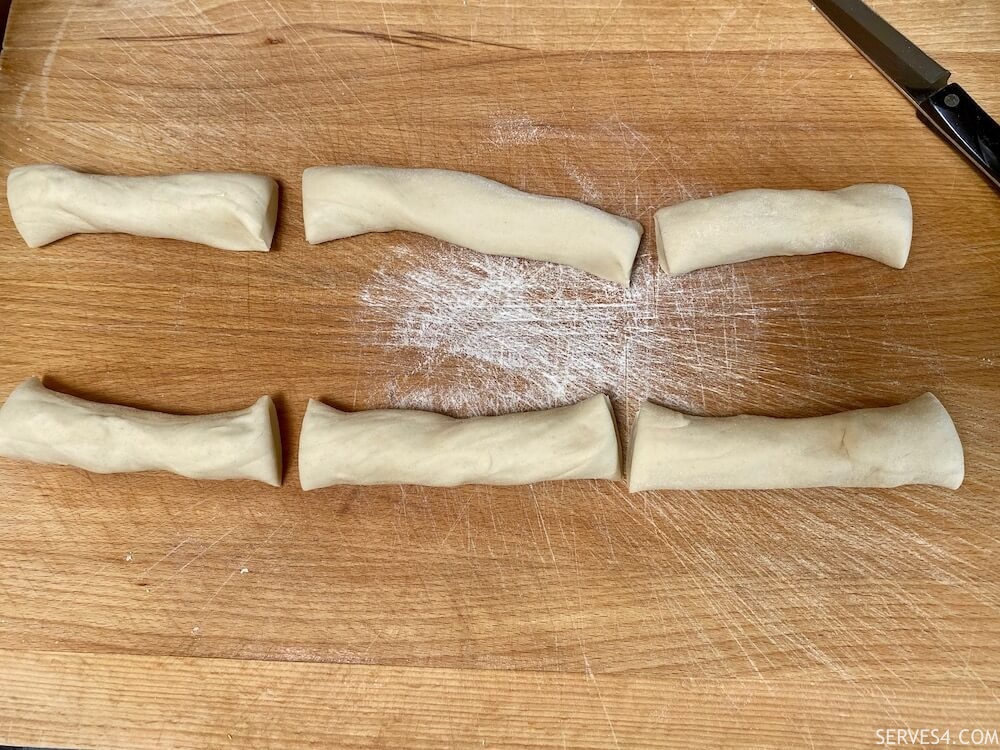
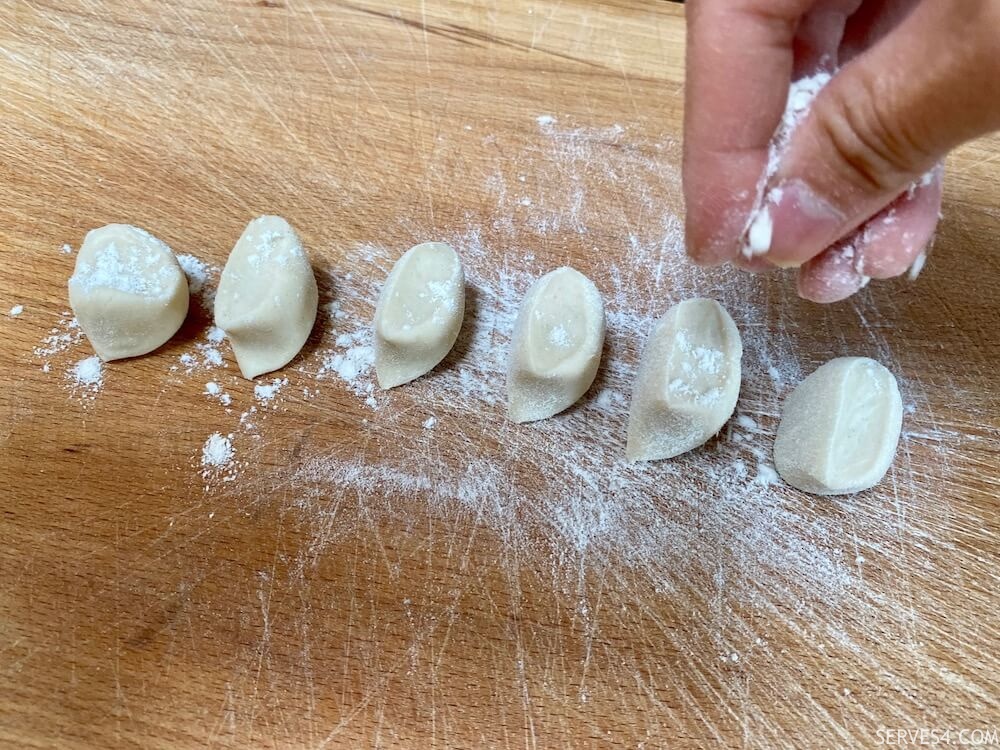
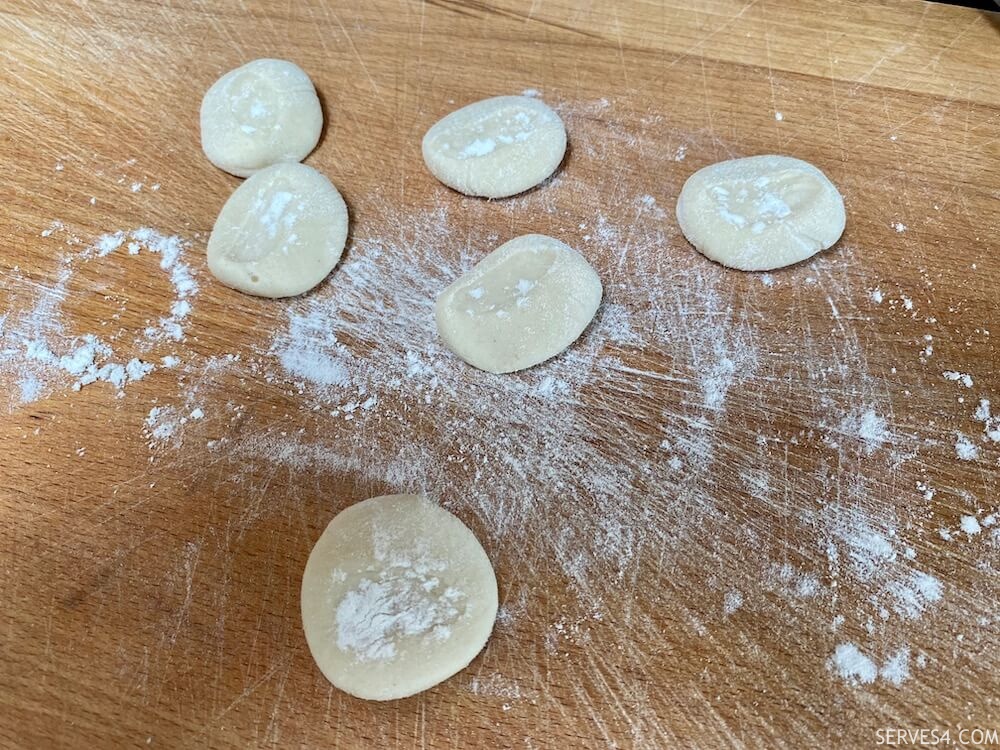
- Dust your surface again, as well as your rolling pin, and roll each chunk of dough into a thin circle, approximately 8cm to 10cm (3in to 4in) in diameter.
- Set aside on a floured surface, and repeat with the remaining chunks of dough until they have all been rolled into flat wrappers. Sprinkle each wrapper generously with flour before layering another wrapper on top, to ensure they don't stick together.
- Either use your dumpling wrappers immediately, or store them in the freezer for later use.
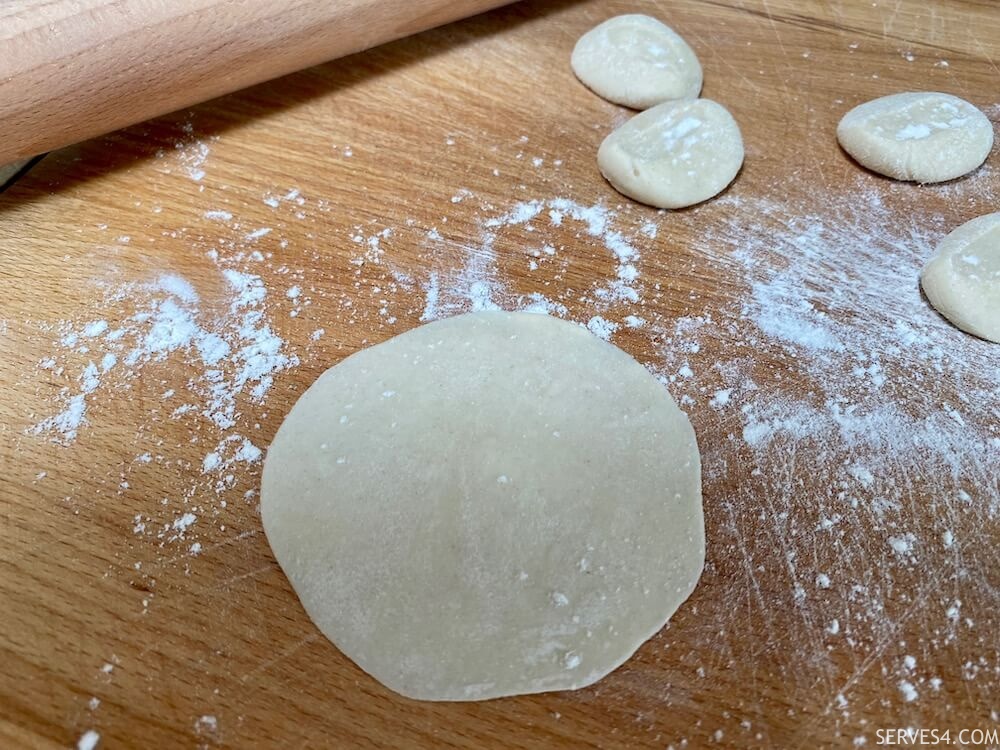
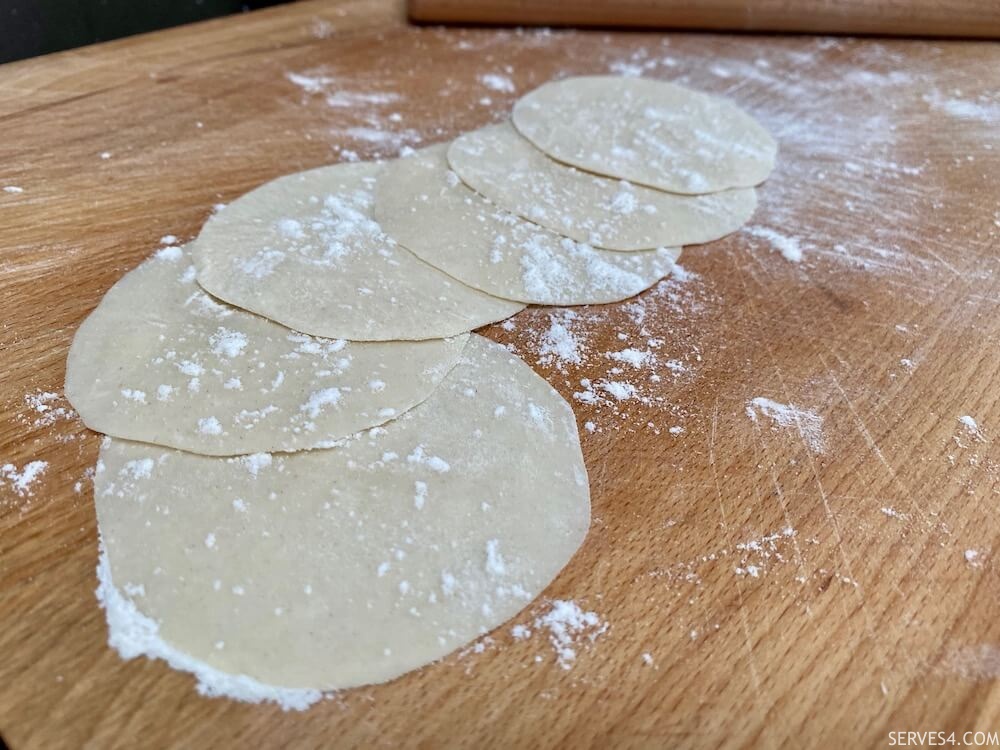
Dumpling Wrappers Recipe
(Jiao Zi Pi | 饺子皮)
By Wendy | Serves 4
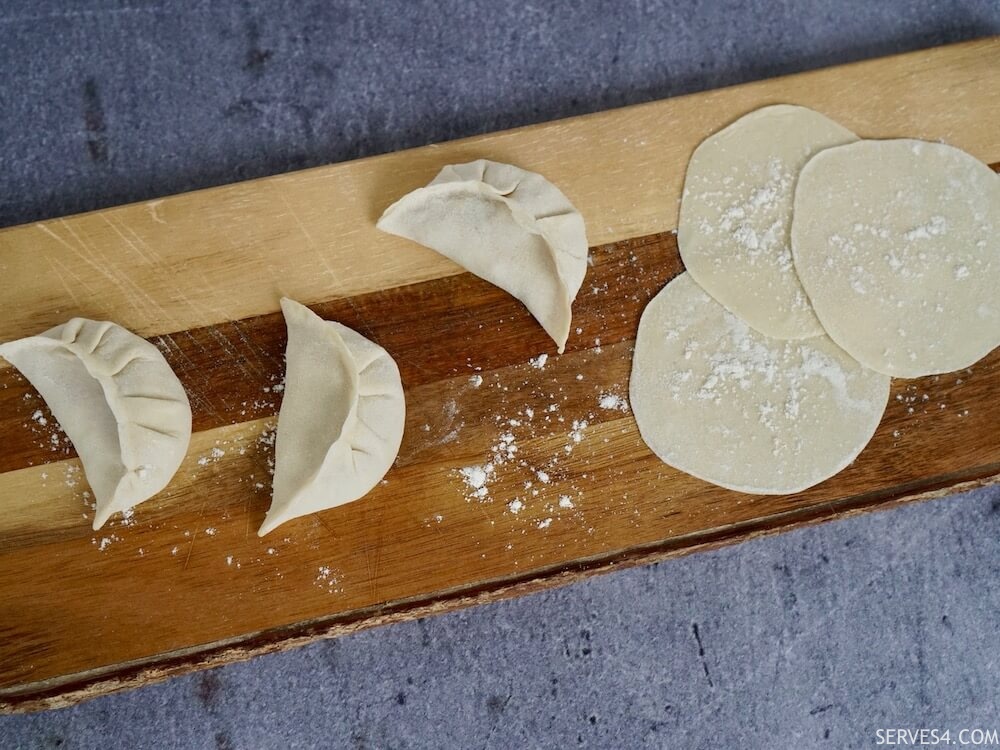
This dumpling wrappers recipe couldn't be simpler, so why not give it a try the next time you want to wrap your own dumplings?
Prep Time: 15 minutes, plus resting time
Make time: 45 minutes
Yield: 36 wrappers
Course: Main, Snack
Cuisine: Chinese
Tags: Dumpling Skins, Chinese Cooking
Ingredients
250g plain flour, plus a generous amount for dustingpinch of salt (optional)
125ml water
Method
- You can make dumpling wrappers either by hand or using an electric mixer with dough hook attachment.
- Put the flour (and salt, if using) into a large mixing bowl, and make a well in the centre.
- Add the water, and stir in one direction to roughly combine.
- Then, using either your hands or dough hooks (on low speed), knead gently for about 8-10 minutes until the mixture comes together and a dough forms.
- Shape it into a rough ball, cover and leave for 15 minutes to rest.
- Knead again for about 2-3 minutes until you have a really smooth dough. Again, shape it into a ball, cover and leave to rest for an hour (the longer you leave it, the softer the dough will become).
- You should now have a very smooth dough that is soft, pliable and easy to work with.
- Dust a work surface with flour, take the ball of dough into your hands, and using your thumb, pierce a hole through the centre.
- Pass the dough gently between your hands in one direction to stretch it, letting the bottom fall onto the work surface as the hole becomes larger, until you have a large ring; the dough should be approximately 2cm (3/4 in) in diameter.
- Cut the ring into 6 equal segments, covering the other 5 with an inverted bowl to prevent drying, whilst you work with one segment at a time.
- You can now choose how you want to roll your dough and make your wrappers. If using the traditional method, continue with the steps below.
- Dust your work surface again, cut the segment into six equal chunks.
- Turn them onto their sides, sprinkle each with and flour, and use the heel of your hand to squash each one gently into a disc.
- Dust your surface again, as well as your rolling pin, and roll each chunk of dough into a thin circle, approximately 8cm to 10cm (3in to 4in) in diameter.
- Set aside on a floured surface, and repeat with the remaining chunks of dough until they have all been rolled into flat wrappers. Sprinkle each wrapper generously with flour before layering another wrapper on top, to ensure they don't stick together.
- Either use your dumpling wrappers immediately, or store them in the freezer for later use.
What's on your mind?
Let us know any thoughts, comments or questions by getting in touch here.
Back to the Top!

